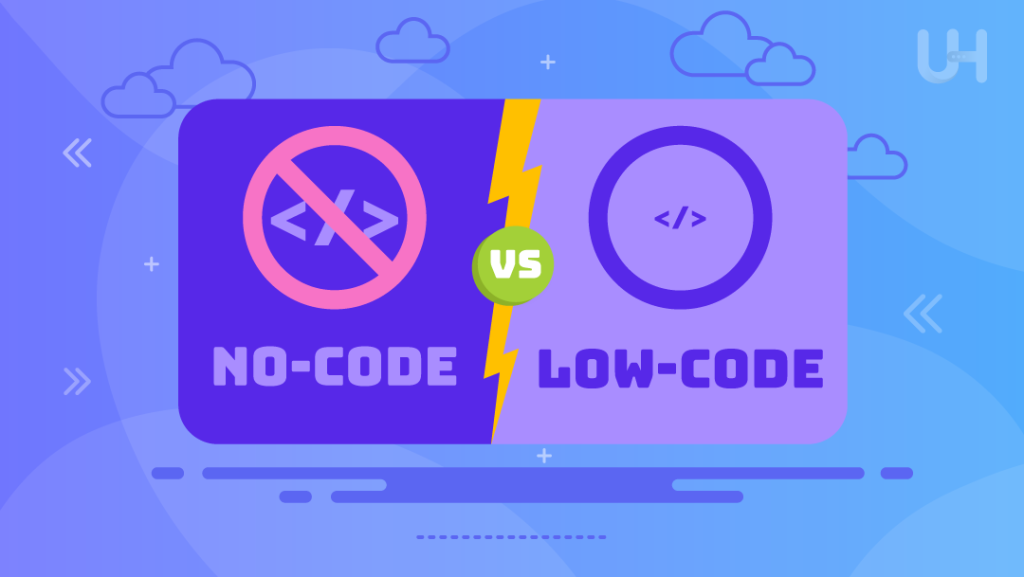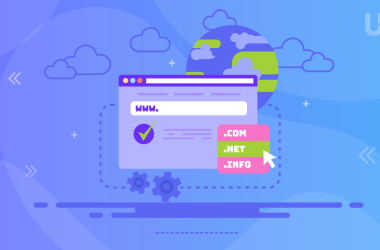Vendor lock-in is when companies transform their activities to rely so much on one particular vendor’s technology, products, or services that switching to another provider becomes extraordinarily expensive, prohibitively complicated, or virtually impossible. This may make life difficult with regard to flexibility and a lack of freedom that can restrict a strategic change since adapting to newer technologies or competitive pressures may be way below par. Lock-in will often arise from proprietary tools, data formats, and other technical or contractual limitations arising from the vendor.
In this article, we will explore on vendor lock-in, its problems, and the factors leading to it. We will also point out some peculiarities of lock-in regarding cloud computing and no-code/low-code platforms. Finally, we will provide actionable steps to avoid vendor lock-ins that help businesses make informed, flexible choices over time.
What is Vendor Lock In?
Vendor lock-in is a situation whereby a business depends on one supplier of essential goods or services due to compatibility, dependency, or contractual limitations. The firm has usually made substantial investments in technology or software that would present significant barriers to switching to another. These can be technical in nature, as customizations or unique data formats or the result of binding agreements, such as early termination penalties.
Thus, big vendors often leave their customers feeling trapped. They cannot move on to new technologies or better solutions other competitors provide due to huge costs and disturbance in business operations. Over time, vendor lock-in could seriously deaden innovation, increase costs, and limit scalability, making them dependent on a single vendor for their core operations.
Challenges of Vendor Lock-In
Vendor lock-in possesses quite a heterogeneous bunch of challenges in terms of scalability, cost, and meeting the long-term objectives of an enterprise, some of which are:
Lack of Scalability
Scalability could be hindered if a company gets locked in with one vendor. The vendor’s limitations may include restricted resources, narrow compatibility with other tools, or limited availability of customized features. Therefore, businesses that need to scale further cannot do so because of these restrictions imposed by vendors. Such locked-in vendors may not support required technologies or charge exorbitant fees for added scalability, limiting companies’ growth and adaptability within a competitive market.
A Possibility of Price Increases
Vendor lock-in makes organizations vulnerable to price increases from a vendor, given that switching costs may make it economically not feasible to switch to another supplier. Vendors can gradually increase the costs over time, knowing that lock-in will create dependency. The business will often end up paying more and more over time, thereby sometimes straining the budget and lowering the overall ROI of the solution.
Unable to Meet Business Goals
As goals change, they often necessitate technological stack or infrastructure changes. However, since businesses end up getting hard-locked into a vendor, this restricts them from quickly adapting to new objectives or operational demands. Being unable to implement necessary tools or technologies to support business growth or adapt to industry changes can hinder a company’s ability to innovate and remain competitive.
Factors Leading To Vendor Lock-In
Vendor lock-in is normally a consequence of specifics in the process that make switching vendors difficult. Some of the common contributors to vendor lock-in include:
Proprietary Technologies and Formats
Many vendors use proprietary technologies or data formats that are incompatible with other systems or platforms. When this inertia occurs, transferring the data, integrating newer systems, or deploying alternative solutions is tough. Then, proprietary formats lock businesses into the vendor’s ecosystem, which invites very expensive and time-consuming migration.
Integration and Interdependence
As businesses integrate a vendor’s solution into their systems, dependencies will rise, making it difficult for businesses to switch providers. For example, critical integrations to ERP or CRM tools can become intertwined, making migrating resources highly intensive. Here, interdependence normally implies that the risks and costs associated with the vendor increase with time.
Long-term Contracts with Penalties
Vendors often require long-term contracts with penalties for early termination, discouraging firms from switching to competitors. Such contracts always seem attractive at the beginning but can often result in a situation where a business has to incur significant costs in case it switches providers before the end of a certain contract time. Long-term contracts, therefore, add another layer of barrier to change, adding to the lock-in problem.
Break Vendor Lock-In with Self-Managed VPS!
Are you worried about vendor lock-in limiting your hosting flexibility? With UltaHost’s Managed Virtual Private Servers, you can enjoy full control over your data and infrastructure, ensuring easy scalability and seamless migrations. Avoid long-term dependencies!
Customization and Specialization
Highly customized solutions tailored to a business’s needs may lead to greater dependency on a vendor for support and maintenance. Added value by customization negatively impacts substitutability because the specific needs served by such solutions apparently make it difficult to switch to an alternative solution. Thus, switching complicates, while the organizations will continue with the same vendor due to the loss of customized features.
Dependency on Vendor-Specific Features
If a business or organization relies on special features a certain vendor provides, the chances of getting locked in increase. In cases where the vendor provides unique features that become integral to the business’s operations, it remains hard to supervise similar results elsewhere. Mere dependence will further limit flexibility, which can be an obstacle to switching to other service providers.
Lack of Exit Strategy
This lock-in could be experienced when a company becomes dependent on the solutions provided by a particular vendor without developing an exit strategy. In that respect, an exit strategy is a structured migration towards another hosting service provider. Switching could be particularly complex, expensive, and time-consuming without a clear plan for data migration, system integration, and continuity. Hence, switching has become a protracted dependence on one vendor.
How is Vendor Lock-In in Cloud Computing Different From Vendor Lock-In in No-Code Low-Code?

Generally, vendor lock-in in cloud computing arises through dependencies created on the proprietary infrastructure, Application Programming Interfaces (APIs), and data formats of cloud providers. Cloud providers usually use special tools and interfaces to make migrating a customer’s data to other providers extremely time-consuming and expensive. Moreover, as more services are rolled out or the cloud vendors improve their infrastructure, companies dependent on those features may also encounter incompatibility with other vendors. While both environments pose risks, opting for services like fast VPS hosting can offer businesses the speed and efficiency needed without the complications of vendor dependencies.
On the other hand, vendor lock-in with no-code or low-code platforms involves more or less dependence on particular platforms in terms of application logic, UI design, and workflow automation. While these platforms make development so easy, they normally lack portability, and you simply cannot take your customized applications and workflows to another platform. Thus, code and functionalities developed in one no-code or low-code environment may not completely translate into another, making the lock-in issues more massive.
Avoid Vendor Lock-In
In practice, this is hard to do when vendor lock-in occurs, but businesses can try to be proactive. A number of strategies are outlined below:
Evaluate Cloud Services
This is where assessing service options becomes very important before selecting a vendor. Companies have to consider a few providers based on open-standards support, platform compatibility, and data portability. Once the vendors chosen are aligned with open standards, companies would encounter no barriers to interoperability, and switching vendors when desirable would be quite easy. Considering options like cheap VPS hosting can also provide the necessary resources without the constraints that often come with more expensive, proprietary solutions.
Ensure Data Portability
Data portability can avoid the risks of vendor lock-in. Indeed, companies must select only those vendors that provide easy access to data and allow information to migrate in some generally accepted industry format. This approach significantly decreases the cost of data migration, and the switch will not face problems when it needs to be made.
Maintain Backups
Securing one against vendor lock-in is important by creating their own backups. This gives a business control and management information even in cases of disruption of vendor services or by periodical backup of the data outside the vendor’s platform in the event of the termination of the contract. Independent backups minimize risk by offering a way to avoid various kinds of constraints that vendors may impose.
Multi-Cloud or Hybrid Cloud Environment
A multi-cloud or hybrid cloud strategy spreads out the dependencies across a few cloud providers or brings together on-premise infrastructure and cloud services. This enhances flexibility and reduces dependence on one vendor. Multi-cloud supports resiliency, allowing businesses to adapt to evolving needs without finding significant vendor-related barriers.
Conclusion
Vendor lock-in can affect business flexibility, scalability, and cost-effectiveness. Being aware of the issues that lead to vendor lock-in and implementing strategic measures against this threat help companies safeguard against such restrictions. Choosing open standards, focusing on data easily ported, keeping a backup, and considering multi-cloud will keep the risks of vendor lock-in away and let a business stay in control of its technology directions.
For businesses seeking control and flexibility, dedicated server web hosting from UltaHost mitigates the risks of vendor lock-in. Enjoy unmatched performance and the freedom to scale resources as needed, allowing your business to adapt and thrive without constraints.
FAQ
What is vendor lock-in?
Vendor lock-in is when a business is so reliant on a specific vendor that switching becomes costly or difficult.
How does vendor lock-in impact growth?
It can limit scalability, raise costs, and make it harder to adopt new technology, slowing business growth.
Why is lock-in common with cloud services?
Cloud lock-in occurs due to unique vendor infrastructures and APIs that complicate migration.
What leads to vendor lock-in?
Proprietary tech, exclusive features, long-term contracts, and lack of an exit plan can all contribute.
How is no-code lock-in different?
No-code lock-in comes from platform-specific designs and workflows that don’t transfer easily.
Can vendor lock-in be avoided?
Not fully, but risks can be reduced with open standards, data portability, and backups.
How does multi-cloud reduce lock-in?
Multi-cloud or hybrid cloud environments reduce reliance on a single vendor by distributing workloads and enhancing flexibility, resilience, and adaptability to changing business needs.














